SGS Diversity Plan
Definitions:
Diversity refers to all the characteristics that make individuals different from each other. These differences can include factors such as race, ethnicity, place of origin, gender, age, or having a disability.
Inclusivity describes the intention or policy of how people from all backgrounds are involved in an organization, how their perspectives are valued, and their needs are understood.
Introduction – the SGS Diversity Plan:
Saskatchewan communities are changing and SGS must embrace diversity in order to remain relevant in today’s changing world.
This plan was created with the intention of encouraging SGS Board members, staff, branches and members to better understand diversity and what inclusivity means for SGS. Expanded knowledge of diversity and how it relates to the work we do will create an environment of inclusivity and respect where all members of the community are served and valued. In addition, it will help spread awareness of SGS and what we do as an organization and expand our membership as our organization strives to revitalize and grow.
Diversity and inclusivity are being incorporated in to the SGS Strategic Plan that is currently being reviewed by the SGS Board of Directors. The focus of the Strategic Plan is on revitalizing and strengthening the organization. As SGS strives to energize, strengthen, grow and develop, we will review our programs and services to ensure they are inclusive, accessible and relevant to the interests and needs of the changing demographics in the province.
In order to reflect the changing demographics in Saskatchewan, and provide services and programs relevant to the interests and the needs of the people of the province, SGS will endeavour to:
- Incorporate the diversity plan into our strategic and operational plans
- Review our programs and services with a diversity lens; and
- Focus on initiatives that will support inclusivity and accessibility to our programs and services fornewcomers and indigenous peoples.
SGS Diversity Statement:
- As SGS strives to revitalize and put the “sparkle” back in the organization, it will strive towards an environment that is inclusive to all, embraces diversity and cultural differences and is open to new experiences.
SGS Environmental Diversity Scan:
Strengths: SGS Board members represent members, branches and communities around the province and bring those voices to SGS and are SGS’ voice back to those members, branches and communities. SGS has developed resources to assist indigenous people explore their roots.
Weaknesses: There is no clear definition or understanding of diversity for SGS or a way to communicate it to members. It has been quite some time since SGS reviewed its programs and services to ensure they are effective and relevant. SGS has no current relationship with newcomer organizations and limited relationships with Indigenous stakeholder organizations.
Section One: Priority Overview
1. Governance/Strategic Plan
- Clarify the definitions of diversity and inclusiveness for Saskatchewan Genealogical Society and incorporate diversity goals and strategies into the SGS Strategic Plan, governance framework, documents and process.
Anticipated Change: The anticipated change will be an increased and collective awareness and understanding of what diversity and inclusivity means for SGS so that once operational will create an environment that serves the genealogical and family history interests of all Saskatchewan people with no barriers. (Board, Staff, Branches and members).
2. Communication
- Seek buy-in of SGS Members on SGS Diversity Plan.
- Build diversity and inclusivity messages in to the SGS Communications Plan for all targetaudiences; messaging for
- Members – to increase awareness and understanding of diversity and why it is important
- Branches – to encourage SGS Branches to include diversity in their work and planning
- Newcomers, indigenous people, potential new members – SGS values and respects our similarities and our differences resulting in an inclusive environment and mentality within our organization.
Anticipated Change: The anticipated change is buy-in from SGS members on the Diversity Plan and increased awareness and understanding of the SGS Diversity Plan, its implementation and initiatives.
3. Partnerships/Connections
- Reach out to other Eligible Cultural Organizations (ECO’s), such as the Multicultural Council of Saskatchewan, community-based organizations like the Open Door Society, and organizations representing indigenous peoples such as the Metis Nation of Saskatchewan, to learn more about the genealogical interests and needs of newcomers and indigenous peoples and share ideas; broaden our appreciation for and understanding of other cultural approaches to genealogy;
- Establish a Membership Committee of the SGS Board of Directors that will:
- seek out and develop relationships with organizations representing newcomers and indigenous people to get an understanding of their genealogy and family history interests/ and needs; and
- promote SGS and what it has to offer diverse interest groups;
- work with SGS Branches on embracing the Diversity Plan and developing local diversity and inclusivity relationships and initiatives
- Seek out cultural organizations with common goals to partner on diversity events and initiatives.
Anticipated Change: SGS will have a better understanding of the genealogical interests of newcomers and indigenous peoples in our province and will be in a better position to address those needs when reviewing and developing genealogical programs, services and initiatives. No one wants to lose their family history, their heritage or that connection to their roots.
4. Programs and Services
- Review programs and services and develop or adapt them to address the genealogical needs of Saskatchewan’s changing demographics
- Incorporate diversity into ongoing educational opportunities such as conference sessions, workshops, presentations, etc.
Anticipated Change: Once SGS has a better understanding of the genealogy interests and needs of newcomers and indigenous people in Saskatchewan it will be able to provide genealogical programs and services to meet the needs of all Saskatchewan people.
Section Two: Details of the Plan
|
Priority Area |
Goals |
Actions – Key Activities |
Outcomes |
Estimated Resources |
|
Governance/ Strategic Plan |
Diversity and inclusivity are an integral part of SGS governance, operations and programming. |
Incorporate the diversity plan into SGS strategic, governance framework and operational plans |
Equitable access and inclusivity are integral to the way SGS functions. |
Board, Executive Director, staff |
|
Communication |
Communicate the importance of diversity and inclusivity in everything we do. |
Develop and implement SGS Communication Plan which incorporates diversity and inclusivity in its delivery |
Common, consistent messaging on the value and relevance of diversity for all target audiences including Board, staff, Branches, members, etc. Get the buy-in of SGS members to the SGS Diversity Plan |
Executive Director Board, Executive Director, staff |
|
Partnerships |
To develop a better understanding of the genealogical interests and needs of newcomers and indigenous peoples. |
Meet with a minimum of 2 cultural or community- based organizations in Year 1 of the plan to discuss the interests and linkages with newcomers and indigenous people EstablishMembership Committee of the Board Find an opportunity to partner with like-minded group or organization on diversity initiative in Year 1 of the plan. |
Better understanding of the genealogy and family history interests and needs of newcomers and indigenous peoples. Cooperation with other cultural or community-based organizations. |
Board, Executive Director |
|
Programs and Services |
To ensure SGS programs and services are relevant, accessible and meeting the needs of the population of Saskatchewan |
Review, develop and adapt SGS programs and services to remove barriers to participation. Look for opportunities to involve newcomers and/or indigenous people in educational genealogical opportunities. Improve online access to SGS resources and programs. |
SGS serves the genealogical and family history interests of all Saskatchewan people with no barriers. |
Board, Executive Director, staff |
Section Three: Evaluation
|
Priority Area |
Success Indicators |
Possible Long Term Impact |
|
Governance/Strategic Plan |
Diversity goals and strategies are a part of the SGS Strategic Plan and Governance Framework |
SGS provides genealogical expertise, programs and services to all the people of Saskatchewan. |
|
Communications |
SGS has a board-approved corporate communications plan that includes key messages on diversity and inclusivity as they relate to SGS. |
Increased awareness results in increased SGS membership; increased visitors to SGS Library; increased volunteers. |
|
Partnerships |
Meetings with organizations representing newcomers and indigenous peoples to gain a better understanding of genealogical and family history interests, expertise and needs Number of partnerships formed to host diversity initiatives and events |
SGS has a good understanding of the genealogical and family history interests and needs of newcomers and indigenous people and is able to deliver or develop programming to meet those needs. SGS has developed and/or strengthened relationships with other cultural or community based organizations. Shared and expanded genealogical expertise Increased SGS membership Improved information sharing and community involvement |
|
Programs and Services |
SGS programs and services reviewed and adapted (sparkled-up) as needed, or new program development. SGS is working on a Digitization Plan/Strategy to make SGS resources more accessible. |
Equitable access and inclusivity SGS programs and services are relevant, accessible and in demand. |

